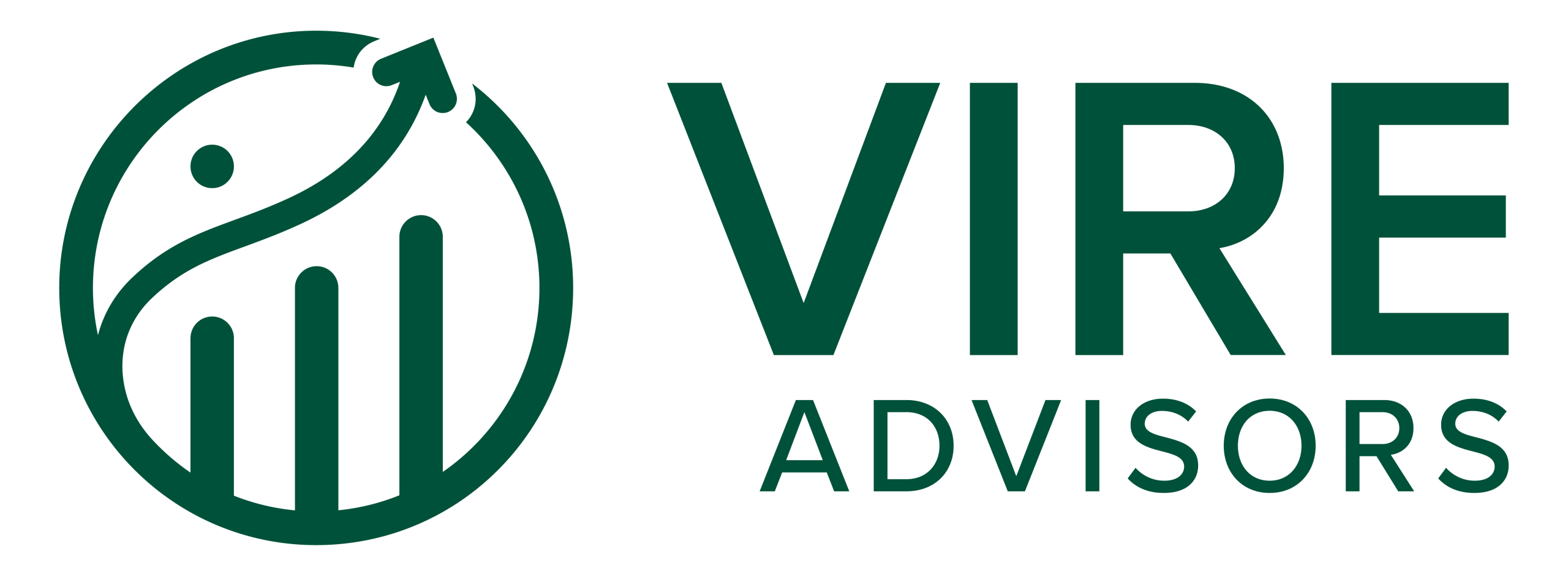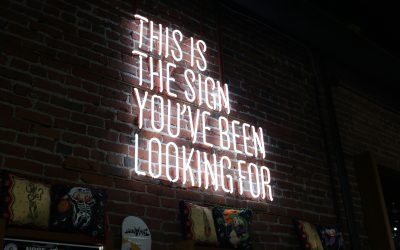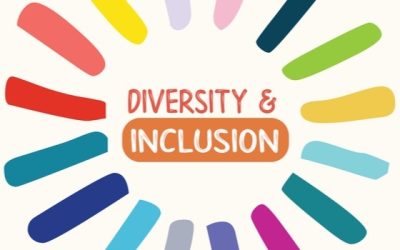“D&I needs to be something that every single employee at the company has a stake in.” — Bo Young Lee Uber’s Chief Diversity and Inclusion Officer
In the last blog I shared my thoughts on moving on from pretty but empty statements into action when it comes to diversity at workplace. I also stated that long-term, sustainable diversity needs a solid inclusion action plan to accompany it. Here, I want to share key inclusion action points that I know work, best practices from my years in HR.
The most diverse team that I have worked with was at Doha, Qatar with 61 nationalities represented in the team of little less than 1000. We also had employees from 5 different generations, so also age and experience wise, the team was very diverse. At the end, we also had a healthy gender balance on all levels of the organisation. Although this was now nearly over a decade ago, whilst discussing diversity and especially inclusion strategies, some of my best learnings come from that part of my career in relation to how to make inclusion at workplace a reality. At the end of this blog, I have listed 8 concrete action points that we did – some after trial and error with other initiatives – that I know can work in any industry and company.
The hotel in Doha was high end luxury with large, busy operations. As I took on the role of HR Director, soon after it had opened, other changes in the senior leadership team took place at the same time. A new business plan and sales strategy was put in place and in the last blog, I highlighted how the unified, shared commitment within the senior leadership team was the key ingredient for success. It was the commitment from the senior leadership teamthat ensured that diversity was not a HR slogan. At Doha, our senior leadership team was exceptionally unified within the understanding that long-term, sustainable diversity could only happen if we had solid inclusion strategy in place.

As our diversity and inclusion strategy started to work and it was clearly something that our customers valued and competitors envied, we understood that the ability to lead diversity and enable inclusion was not inbuild in all managers. We had specific behavior-based questions that we asked from possible new managers and supervisors, soon from all team members during interviews :
“Tells us about a time you learned something from another culture?”
“Tell us about a time when you worked with someone who was very different to you?”
“Tell us about a time you celebrated diversity in your team?”
“ Tell us about a time you were faced with cultural misunderstanding in your team and how did you, as a manager, solve it?’”
I remember doing one interview – face to face – with a senior leader and as the hiring manager was delayed in an other meeting, I met the candidate with our newly started Talent Acquisition Specialist who came from a country in Africa. As I introduced her to the candidate and she said her name as they shook hands, the candidate said “oh that is so difficult for me to pronounce, am never going to learn that, can I just call you sweetie?” Needless to say, at that point it was clear to me that she might not be the right candidate for us. Albeit the name maybe was one that she was not familiar with, it was not respectful to resort to ‘sweetie’. If the candidate was not willing to try and learn a name of a potential new colleague, how was she going to manage her diverse team? Respect them and make everyone feel included? It would be confusing if she called everyone in her team sweetie. Learning each other’s names correctly, even how unfamiliar you are to them at first, is the first necessity in respecting each other’s culture and embracing diversity.
The interview questions helped us to understand the level of awareness and understanding, however, the lack of it in itself did not stop hiring. What mattered was the interest in interacting, with respect, with people who were different.
If you cant measure it, you can’t manage it
How do you measure the success of diversity and inclusion? There are many ways of doing this, but when the inclusion was such a big part of our business strategy I needed measurement tools that were clear and linked to other key business performance indicators as well.
In Doha, we measured diversity by simple HR data, demographics of the team. The ratio of female to male, the ratio of different generations, the ratio of different educational backgrounds, languages spoken, diversity of length of service. And this data was shared, it was not only part of the monthly HR reporting that I prepared to the leaders but to owners and stakeholders, it was also something we published in our internal news. Everyone in the business knew, the diversity statistics was reported next to the financial results on monthly bases. And just as we celebrated other business successes in the town hall meetings, we also celebrated diversity.
Inclusion we measured by employee engagement scores and turnover percentage.Simply said, if the inclusion strategies were working, the team was happy. When engagement scores were high it meant that everyone felt included in the team. As the engagement scores were also then correlated to customer satisfaction scores and CRM data, new business results and financial results, it gave another validation of the effectiveness of the inclusion strategies.
We did in HR also look at the engagement scores closely, drill down to the topics in different teams in detail and listened closely to the feedback that was discussed in the survey feedback sessions that followed the engagement survey results. One of the key things we did as a HR team, was to try and ensure a very high participation ratioon the engagement and team member feedback surveys, always. And if there were issues with the participation index, we started to investigate as to why. As the business was large and operated 24 / 7, you can not pretend to know what was happening at all times in every team, but as leadership team and HR we needed the engagement survey data to really know the pulse of the team, so, again, we celebrated it when participation rate was high. Made the results matter, showed that the feedback was valued.
It was and it is critical when measuring engagement and thus inclusion to keep an eye on the participation ratio of each survey cycle. The fact is, that when inclusion declines, the participation ratio also goes down. As a HR team – if your participation percentage is steadily declining, it most certainly tells a story of not just lower engagement but low inclusion and soon low retention.
With the 61 different nationalities, we did not start from high. My first engagement survey at Doha as a HR Director was the lowest I have actually ever had on my career. But, it was not difficult to identify that one of the main reasons for the overall low scores was the lack of actual inclusion in the team.
So, the work started. After we put in place a specific inclusion strategy and little over a year of hard work from the HR team and from everyone in the management and leadership teams, our employee engagement score was among the 10 highest in the EAME division, compared to nearly 400 other businesses. And not just once, but for 2 years running. So what did we specifically do? Read on!
But before that, I need to add on a disclaimer about measuring inclusion; engagement survey does not in all examples work as the best measure of inclusion. In fact, the least diverse teams sometimes seem the happiest, giving high engagement scores. However, in these situations, over a period of time, the other business success indications rarely add up. With low diversity, regardless of good engagement scores, innovation, business renewal and new business gets lower, sales decline. As our engagement survey in Doha was also aligned and combined with other key business success indicators, financial results and customer satisfaction scores, the combined data showed that the inclusion plans were working.
If your company does not have engagement survey in place, or you feel that it is not the right measurement for inclusion – look for another way to measure. One of the easiest ways to measure inclusion, which we also used in Doha, is simply the turnover statistics. This measurement works in every industry. Who is leaving and why? As HR, your exit interviews and exit data is key to understanding if there are inclusion issues in the organisation or in specific teams.

So what did we specifically have in our inclusion strategy? What is it that we did?
1. Recruitment strategy= we were conscious of ensuring diversity when making recruitment decisions. At every recruitment.
- Representation matters– we made conscious decisions every time we made a hiring decision. In order to ensure real diversity, decisions during recruitment and resourcing need to be made so that they actually support the diversity action plan. Decide to hire someone from a minority or different gender and then do it.
2. Interviewing= we ensured we hired team members that were able to work in diverse work environment and leaders that were able to ensure and lead inclusion.
- We held hiring managers accountable. The reality is that if the company, HR and Senior Leaders do not hold hiring managers accountable for diversity hiring and do not provide leadership development on how to ensure inclusion – it won’t happen. It is the line management and the leaders that matter when it comes to diversity and inclusion – not the company vision. Vision might be what it is, but the actual commitment is on the line management level where hiring decisions are made.
- The resourcing team and tools were set to support the goals and guided the hiring managers in their decisions. We did have one particular manager of a European nationality who only wanted to interview male candidates from the same nationality stating that the language requirement was a necessity – my Talent Acquisition Specialist called his bias on this when he refused to interview a female candidate with fluency in that language. What did I do when she called him on it? Supported her, had a chat with the said manager and worked with him that little bit closer when it came to not just hiring but also promoting his team members.
3. Leadership Development = we had leadership training for supervisors and managers on how to ensure inclusion and how to motivate diverse teams.
- At the time we tried to find a training supplier and a company who would do this to us and surprisingly it was very difficult. At the end – we developed the supervisory training ourselves with some help from the Head Office in Brussels. The diversity training was incredibly successful, not just by achieving our goals but it had a strong impact on the supervisory effectiveness feedback that the team members gave to their managers once a year. The training was very practical not theoretical.
- The very important question that HR needs to ask is how do we enable our leaders to ensure inclusion? If there is no actual training program, awareness workshop or coaching curriculum on the learning agenda – one should be included fast and run regularly.
4. Onboarding= we had a 5 day onboarding to all new employees, managers and team members alike and employment did not start until it was completed. Onboarding included specific learning outcomes on cultural diversity and team work skills.
- Needless to say, this was a big big commitment resources wise from the company. A lot of the curriculum was knowledge based learning, customer skills, brand awareness, service recovery, communication skills and then a large chunk of it was to ensure all the new team members knew about our company goal in regards to diversity, why it mattered and why it was a joint responsibility to make everyone feel included. We talked about what culture is and what it means to different people, we talked about what inclusion is and how everyone could ensure that we included everyone in the team.
- Some learned and grasped the concepts quicker, some were acutely aware of them before they joined, some were meeting people from different country for the first time. I am not going to pretend that this was 100% success – we did from time to time have issues with cultural misunderstandings in the teams, after all we had 61 different nationalities and a very wide demographics in the workforce. What mattered was how the misunderstandings, cultural disagreements were dealt with. And the managers played a key, very successful role in addressing those issue. We did also have a solid whistleblower process in place that anyone could always also anonymously raise a concern. Sometime concerns were raised, all were investigated, and I made sure that even when the outcome was not always what would have been hoped for, every case was investigated, taken seriously. Not all disagreements that were labeled cultural misunderstandings actually were that.
5. Performance Management= we had a very clear performance management process that included specific success behaviors and competencies, both for the team and the management. It made it easier to evaluate performance objectively and to remove as much as possible any bias.
- We did calibration on performance evaluations on executive committee level, ensured that unintentional bias was not present. Especially for new managers this was sometimes difficult to understand, but the process worked better with the calibration in place.
6. We talked about bias. In the management level we did challenge each other on the decisions relating to hires and promotions. In our diversity training, we acknowledged that as humans we are at times inclined towards what is familiar to us and by challenging ourselves and others around us we can change it.
7. We made the results matter = all managers were evaluated based on all competencies, including the ability to lead diversity and to ensure inclusion. The performance evaluation was supported with actual HR data of the manager’s team diversity statistics and the engagement scores. The ability to lead diversity and inclusion was directly linked to the managers personal annual bonus calculations.

And of course wecelebrated diversity with the team!
- We had newsletter that addressed diversity, each newsletter highlighted one nation and told about it more, what made that culture unique and what were good conversation starters with someone coming from that country or region of the world.
- We celebrated all of the national days that we had. Not only by having a cake and making the team members from that country feel special but by plastering ‘did you know’ facts about that country on the team member areas. This was such a great fun – I really learned so much. It is also because of this I still know when many countries celebrate their national days. We also did staff parties where everyone dressed in any national costume they felt comfortable in – I went in my Vietnamese áo dài.

As summary, these 8 concrete action points are the ones that I feel mattered the most when it came to inclusion, many I have used as inclusion strategies since.
Looking back, the diversity part was easier ; with a skilled and professional HR team and unquestionable support from the leadership. Also with the immigration processes and the culture of the country we operated in, this also already supported diversity goals. However, ensuring effective inclusion was something that needed real focus, planning and action, it needed few trial and errors on some efforts, it definitely needed measuring the outcomes and making results matter, it required A LOT of listening to the teams, and working as a team. Above all, it required senior leadership commitment, commitment to real, long-lasting, fair inclusion.
Change does not just happen, it needs to be made to happen.
Thanks for reading, Pirki
Food for thought? Let me know what you think!
If you need any help in getting started with analysing your current HR data or demographics report, or if you need help with planning a diversity strategy or inclusion action plan or simply would like someone to come and do an awareness training in your company – get in touch and lets have a chat. Would be happy to help!






